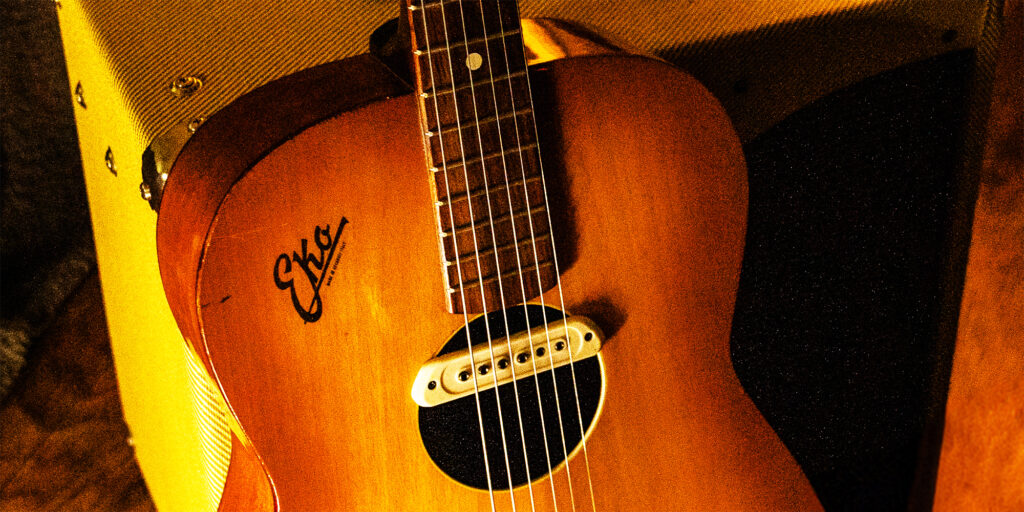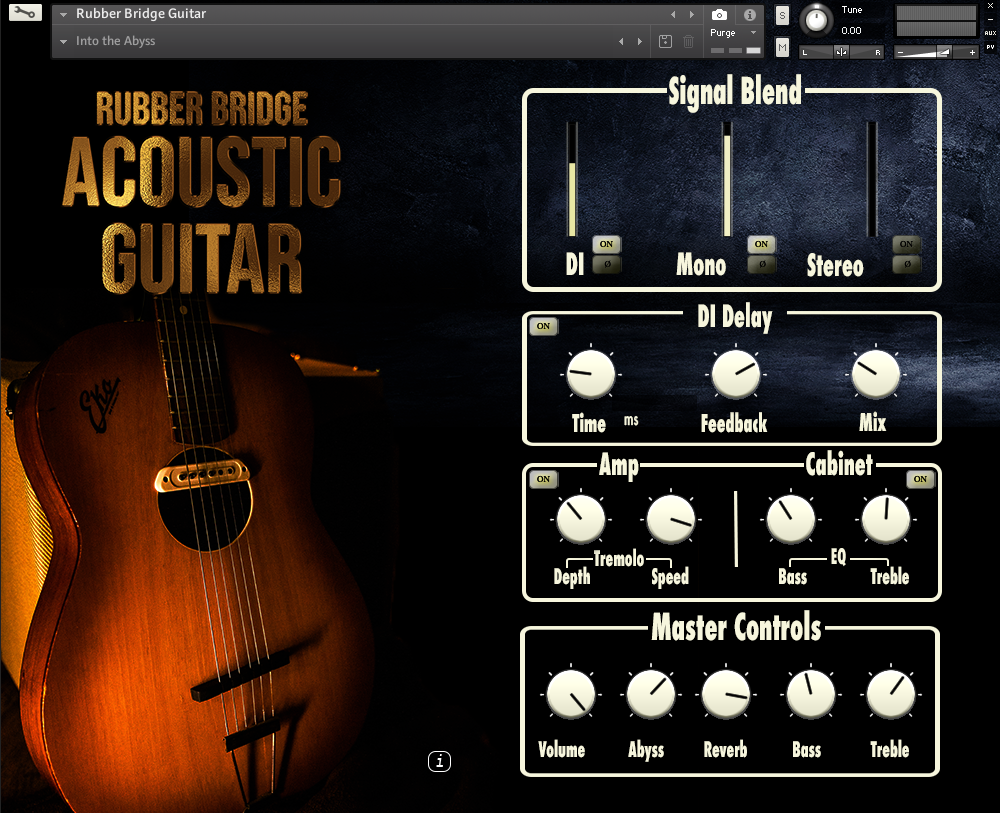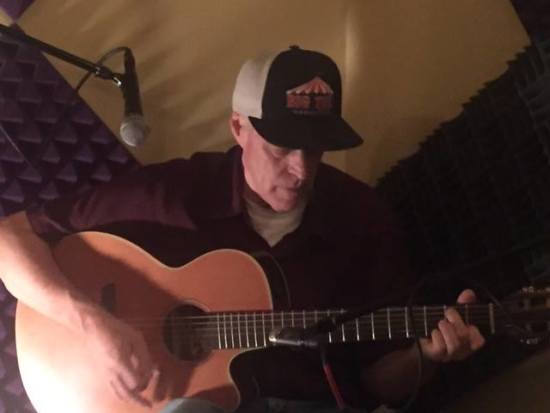
The story
My desire to make this unique guitar sound accessible to everyone, led to the ambitious idea of sampling a rubber bridge guitar. However, the project faced two challenges: my lack of experience, both in sampling acoustic guitars and in modifying guitars. Nevertheless, I decided to explore this uncharted territory!
The first step was finding a suitable guitar for the experiment. Opting for an old Archtop parlour guitar seemed like the most straightforward choice, given their floating bridges would be easier to replace. Vintage Harmony or Silvertone parlour guitars were popular choices in this realm, but considering availability and cost in the UK, the search led to an Italian guitar brand called EKO. After a minor setback in a failed eBay transaction, I discovered another EKO parlour guitar within reach.
With the guitar in hand, the next step involved obtaining the necessary materials, including jewellers bench block rubber, flat wound strings, and a magnetic sound hole pickup. While fitting the rubber bridge itself proved relatively straightforward, the challenge lay in cutting the rubber to size. Overcoming hurdles with inadequate tools, perseverance prevailed in getting the rubber ready for swapping the existing bridge.
Sampling the guitar presented a new set of questions: which notes to sample, at what volumes, and whether to include round robin samples for realism? I opted to sample every three notes across a range of octaves, three velocities (soft, medium, and hard), and two round robins. The process was time-consuming but promised a rewarding outcome. Subsequently building the instrument in Kontakt involved trial and error, fine-tuning velocity layers, and noise reduction to achieve a natural and clean sound.
Finally, creating the user interface marked the most enjoyable phase, involving the addition of effects, controls, buttons, dials, and background graphics. The result? The Rubber Bridge Acoustic Guitar for Kontakt—an instrument that transcends the boundaries of traditional guitar sounds.
To experience the journey and hear the remarkable transformation for yourself, check out the demo and walkthrough video.
Contributors

Jon Chapman
Created by Jon Chapman
Interface

Reviews for Rubber Bridge Acoustic Guitar
Leave a review to let others know what you thought of the instrument!
REUTER'S REVIEW OF A RUBBER BRIDGE GUITAR
I'm a "Writer / Arranger'' here in Nashville, Tennessee and I use CUBASE for all my Production Projects. I play Guitar and I record a lot with Acoustic and Electric Guitars. I modified two of my Instruments by replacing the Bone and Metal Bridges with Rubber Bridges, so I'm somewhat familiar with the sound. (also from hearing it used on recordings)
Jon Chapman's RUBBER BRIDGE ACOUSTIC GUITAR is Exceptional. It sounds BETTER than the Acoustic Guitar that I modified. I always have a challenge with intonation on MY Guitar but JON's RUBBER BRIDGE ACOUSTIC GUITAR has excellent intonation and a beautiful sound. A Rubber Bridge helps eliminate those Nasty Bright Overtones that Acoustic Guitars generate (unless that's a sound you're looking for) and JON's RUBBER BRIDGE ACOUSTIC GUITAR can be used for Melodies or interesting Textures.
Simple Interface, Easy To Use and Works Well with KONTAKT 7 and CUBASE 12.
THANK YOU for creating this Beautiful Instrument !!! I can't wait to surprise my Writing Teams with a Unique Recording using this instrument.
David Reuter
Big Tent Nashville, USAhttps://www.davidreuter.com/

